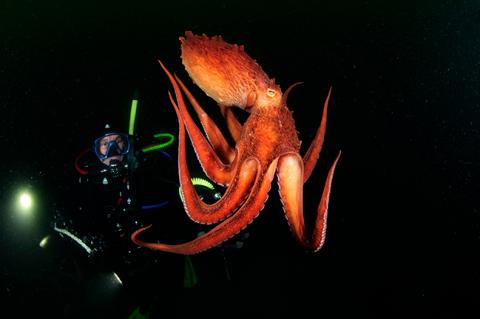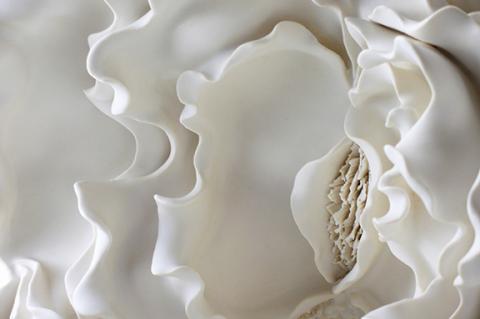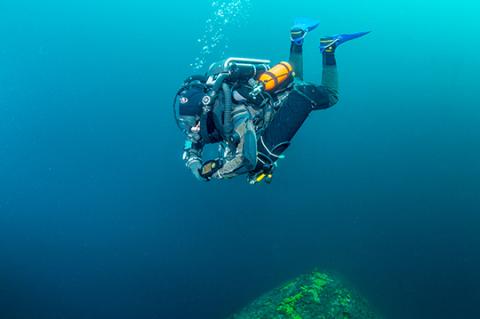X-Ray Mag #88
Main features in this issue include:
Abstractions
Abstract underwater photography—some may whisper, oh that’s “art”; others may shout, it’s “foolish and completely pointless!” while mourning the downfall of “real” photography. Some may stare at abstract images, unable to understand what they are seeing, because the perceived image does not match their expectations.
Ladies and gentlemen, welcome to the mysterious and challenging world of abstract photography. Yes, it works underwater, too.
Black Water Diving in the East Sea
Many want to feel what it is like to fly in the cosmos—how one’s body levitates in dark space. Personally, I have never been in space, but I have found this feeling on night dives.
Some people say that open water is an extreme environment, so what would be a good reason to enter it at night? I say that night dives allow divers not only to feel like cosmonauts, but they can also explore a different underwater world.
Dive Like a Russian: Busted Myths & Concrete Facts
For us survivors of the Perestroika, there are still some nice things we recall from the nostalgic Soviet past—one of these being, of course, the endless Cousteau series, run and rerun so many times on black-and-white television. The skinny Frenchman, with the (supposedly) red beanie, introduced an entire generation (or two) to the mysterious underwater world, full of beauties and beasts.
Even the terms “scuba” and “diving” had never been mentioned in the Russian voiceovers for the series, as these terms were adopted later in the ‘90s, after the sudden death of both the USSR and of Cousteau. Yes, he is said to have visited the Soviet Union once.
Ice Diving in the White Sea
Not many divers like to dive in cold water, especially under ice. A possible reason for this may be that they do not know about the new, modern, comfortable equipment for this kind of diving—equipment which can turn these extreme dives into a curious and fascinating vacation.
I was told all this by an old friend (and expert diver) because he was keen to entice me (just recently returned from a dive trip in the tropics) to take part in a dubious expedition somewhere far to the north and under the ice.
Lake Baikal: Technical Diving in the Deepest Lake on Earth
Lake Baikal is the deepest lake on the planet, with a volume of around 23,615 cubic kilometers of fresh drinking water. Each year, Lake Baikal is visited by many tourists, including recreational divers, underwater photographers and scientists who dive in the coastal waters of the lake. But when it comes to deep-water technical diving in Lake Baikal, few have heard of it, probably because these divers tend to be taciturn in nature.
In Irkutsk, the nearest city to Lake Baikal, there are four dive centers and about 200 active divers. Having carefully studied the information about them, I learned that Dive Center Sval is one of the oldest in the city.
Noriko Kuresumi Portfolio
Noriko Kuresumi is a Japanese artist based in New York City who creates ceramic sculptures with exquisite, sensual forms inspired by the harmony and balance of the ocean. X-Ray Mag interviewed the artist to learn more about her artwork and perspectives on art and nature.
"The Japanese character for the word 'sea' has the character for 'mother' in it. The elements in seawater and in amniotic fluid are similar. The Ocean is the mother of the Earth."
— Noriko Kuresumi
Rescuing Seals in Vladivostok
The larga is the spotted seal (Phoca largha) that lives in the North Pacific Ocean along the coasts of South Korea to Chukotka in Russia, and from Alaska to California in the United States. These seals choose coastal rocks in shallow bays for their rookeries. In winter time, larga seals spend a lot of time on ice near ice holes, or on floating ice floes along the coast. These seals feed on fishes, octopuses and shellfishes.
Seals pups are born in February to March when local sea bays are still covered by ice. Seal pups have white fur; hence, local people in Russia call them “beliek,” which means “white puppy.” After giving birth, the mother stays and feeds her pup milk for only seven to ten days.
Scubatlon: Environmental Protection as a Sport
Over the last half century, scuba diving—which was, in its earlier days, reserved for the elite, brave and courageous—has become a mainstream sport for the masses. On the one hand, this is very good. Millions of people get to see with their own eyes how diverse and exciting the underwater world is. On the other hand, diving can cause serious damage to coral reefs, which are rich in biodiversity, but extremely vulnerable to human impact.
"We are not making enough money from our dive center, but we enjoy it immensely," said science fiction writer Arthur C. Clarke sitting in his wheelchair. The rustling of palm trees and the ocean waves could be heard just outside.
Sharks of the Protea Banks in South Africa
The Protea Banks enjoys a reputation as one of the best places in South Africa to dive with sharks, and depending on the time of year, you can see up to seven different varieties, including ragged-tooth sharks, oceanic blacktip sharks, bull sharks, tiger sharks and three varieties of hammerhead sharks—scalloped, smooth and great hammerhead sharks. Often, these varieties are in large, if not astonishing, numbers.
There is a reason for the abundant life in the region.
The Philippines' Puerto Galera
I have spent decades covering the Caribbean for major dive magazines. But when it is time for a personal trip, I usually set my sights farther from home. One destination that has become a personal favorite over the last ten years is the Philippines. The waters of this island nation lie within the “Coral Triangle,” a region recognized as having one of the most biodiverse marine ecosystems on the planet.
Divers visiting the Philippines enjoy a rich variety of underwater landscapes and bountiful marine life, and can choose from a number of resorts that provide excellent service at a reasonable price. A good example is the Atlantis Dive Resort in Puerto Galera.
The Prometheus Project
Prometheus is an underwater photography and videography project by the Orda Cave Underwater Speleology Center. The center is looking into the use of the latest technology in dive lamps to illuminate huge caves for photography, where flash has previously been used.
Orda (Ordinskaya) Cave system is a horizontal gypsum labyrinth located deep within Kazakovskaya Mountain (in Perm, Ural). The largest part of the cave labyrinth is filled with very heavily mineralized water, and the total length of its underwater galleries is about 5km.
The Remarkable Intelligence of Fish
Fish reveal such complex thinking in their daily lives that they could not possibly be as simple-minded as fishermen claim.
The MSR has been the classic test for self-awareness since it was developed by Gordon Gallup in the 1970s in his work on chimpanzees. In the years since, only monkeys, elephants, dolphins, magpies, and quite recently ants, have succeeded in passing it.
What Does It Take to be a "Good Diver"? Part II
You are chatting with a diving friend and the conversation turns to mutual acquaintances. “Do you know Bob and Carol?” your friend asks. “Oh yes, good divers!” you reply. We will usually refer to someone as a good diver when they are not around. We will rarely say it to their face. And it is something that we all rather hope people say about us behind our backs.
This is the second of two articles designed to provoke discussion on the topic. In the first article in the previous issue of X-Ray Mag, I covered some of the more obvious characteristics. Here are a few more.
Young Divers
We are all born under the sun, and for the first year, we are perfectly at ease underwater. In the first months, we keep our eyes and mouths open without any problems, even underwater, thanks to the closure of the glottis that prevents us from drowning. After the first 10 to 12 months, however, we lose this superpower, and to go underwater, we have to organize well!
Diving is fantastic but also expensive and tiring. Perhaps this is the reason why the numbers of young people taking up diving seems to be decreasing in recent years.
















